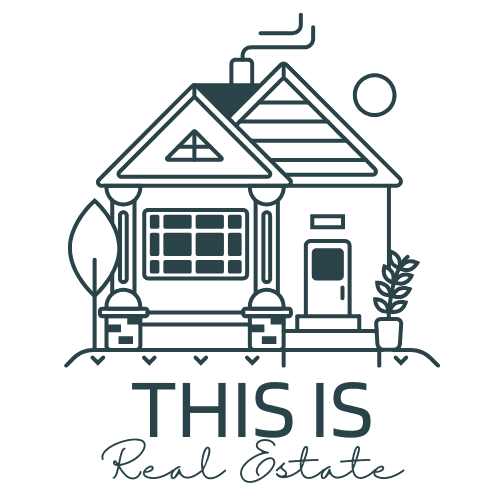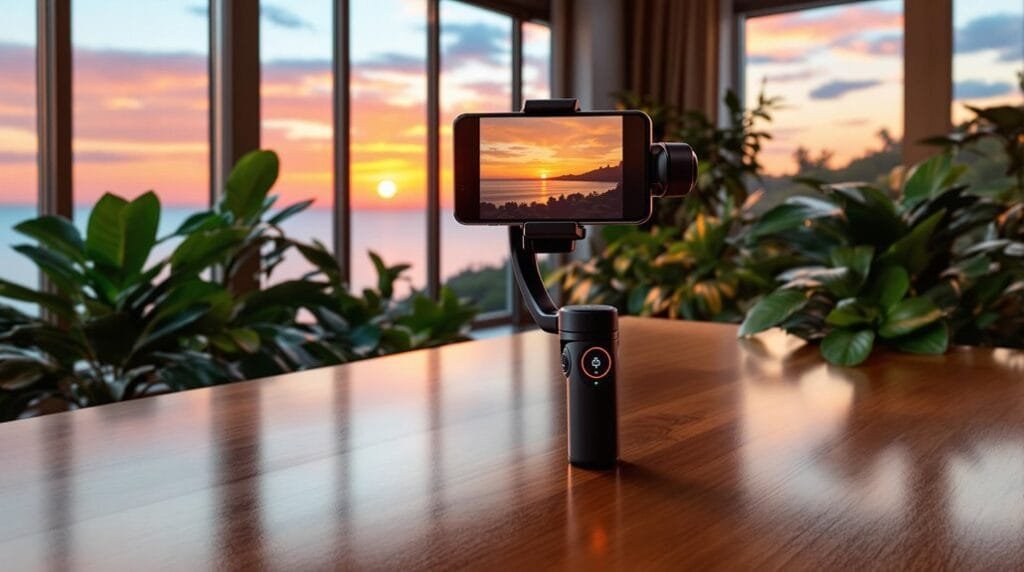Engage your real estate audience on social media by showcasing listings through professional-quality carousel posts and virtual video tours that highlight unique property features. Encourage interaction with polls and quizzes using Instagram Stories stickers, and boost community ties by showcasing local events and attractions. Share market trends and updates to provide followers with valuable insights, reinforcing your expertise. Highlight success stories from clients and share video testimonials to build trust and credibility. Collaborate with local businesses to enhance community spirit, and create compelling graphics to elevate your content’s visual allure. Exploring these strategies further will deepen your engagement and effectiveness.
Key Takeaways
- Use carousel posts to showcase property photos and details effectively.
- Share video walk-throughs to provide virtual property tours and highlight features.
- Engage audiences with interactive Instagram Stories using polls and quizzes.
- Provide regular market updates and neighborhood insights to inform followers.
- Share client testimonials and success stories to build trust and credibility.
New Listings and Showcases

When showcasing new listings on social media, leverage engaging formats to capture your audience’s attention. Start with carousel posts to highlight multiple photos of a property in a single post on platforms like Instagram. This format allows potential buyers to swipe through and experience different aspects of the home. Include video walk-throughs to give a thorough view of the property, offering viewers a virtual tour that highlights key features such as unique architectural styles or significant upgrades. To further enhance your listings, verify all images are of professional quality, and pair them with clear, concise descriptions that communicate the property’s value effectively. Enhance follower engagement by showcasing properties with realistic property depictions that tell a story through imagery. Don’t forget to share open house details, including the date, time, and location, accompanied by high-resolution images or videos. This not only promotes the event but also entices potential buyers with a sneak peek. Highlighting key features is essential. Focus on what makes each property stand out, whether it’s a modern kitchen, a stunning backyard, or energy-efficient systems. By emphasizing these elements, you’re more likely to catch the eye of serious buyers. To further captivate your audience, create engaging commentary that not only highlights the property’s attributes but also keeps viewers interested and entertained throughout the presentation.
Engagement and Interactivity
Engaging your audience on social media goes beyond just posting content; it involves creating interactive experiences that draw them in and encourage participation. Start by incorporating engaging stickers in your Instagram Stories, like polls, sliders, and quizzes, which prompt immediate interaction. These tools invite your followers to directly engage with your content, offering a fun way to learn more about their preferences. Adding clear calls-to-action (CTAs) in your posts can further encourage viewer interaction, prompting them to take specific actions, whether it’s commenting, sharing, or visiting a link. Consider hosting live Q&A sessions where you can directly answer questions and showcase your expertise in real estate. This not only builds trust but also personalizes the experience for your audience. Sharing behind-the-scenes content can make your brand feel more relatable, providing a glimpse into your daily operations and humanizing your business. Encourage followers to engage by responding to comments and participating in conversations on your posts. Additionally, actively engaging with locally-based influencers can expand your brand visibility and connect you with new audiences. Actively monitoring engagement metrics allows you to track the effectiveness of these strategies, helping you refine your approach for maximum impact.
Market Updates and Insights

Staying informed about market trends is essential for making smart real estate decisions. By staying on top of the latest data and insights, you can navigate the ever-changing landscape of the housing market with confidence.
For instance, Canada’s housing market has seen significant developments, with October 2024 home sales reaching 43,294—a substantial 8.4% increase from the previous month and 22% higher than the previous year. Meanwhile, the national benchmark home price was $713,200 in September 2024, slightly down 0.6% from the previous month and 3.8% year-over-year. In the U.S., the median sale price of existing homes reached $404,500 in September 2024, marking the highest recorded for that month.
Understanding regional trends is equally important. Ontario witnessed a sharp rise in the average home price, hitting $851,478—up 4.1% monthly. Quebec’s real estate market rebounded in 2024, with third-quarter sales driven by a 16% rise in condominium transactions.
Significantly, the sales-to-new-listings ratio in Canada stood at 51% in September 2024, suggesting a balanced market overall. In October 2024, the SNLR increased to 58%, indicating a shift towards seller market conditions.
Economic indicators also play a vital role. While Canada’s active listings increased by 16.8% year-over-year, they still fall short of meeting demand.
Importantly, mortgage rates and inflation impact both Canadian and U.S. markets, influencing buying power and overall market activity.
Storytelling and Testimonials
Imagine walking through the front door of your dream home, where every detail resonates with your vision of the perfect living space.
Storytelling and testimonials are powerful tools in real estate that can turn this vision into reality. By weaving emotional narratives, you can help potential buyers imagine themselves living in a property, connecting on a deeper level. Consider incorporating video content and virtual engagement to further captivate your audience. For example, sharing virtual home showing videos can create immersive experiences that allow viewers to explore properties from the comfort of their homes. By combining storytelling and testimonials, you can also utilize high-quality property images to enhance the visual appeal of your content, drawing in potential buyers with captivating visuals.
Consider these storytelling techniques:
- Use Emotional Appeals: Make buyers envision themselves in a property.
- Before-and-After Transformations: Highlight renovations to showcase potential.
- Highlight Unique Features: Showcase special characteristics to stand out.
- Create Immersive Experiences: Let viewers explore homes through virtual tours.
In addition to storytelling, testimonials provide credibility and trust. Sharing client success stories with photos or videos can highlight your impact as an agent.
Video testimonials bring authenticity, allowing clients to express their satisfaction directly. Written reviews, paired with photos, add a personal touch, building a stronger connection with potential buyers.
By emphasizing how you’ve helped clients achieve their goals, testimonials showcase your expertise and reliability.
Combining storytelling and testimonials not only engages your audience but also builds trust, making your real estate content truly enchanting.
Community and Local Focus

A strong community focus in your real estate content strategy can greatly enhance your engagement with potential buyers and sellers. By participating in local events, festivals, or charity initiatives, and sharing these experiences on social media, you’ll connect with the community and showcase your local roots. This involvement positions you as a trusted and active member of the area. Creating and sharing a community calendar with upcoming local events not only informs but also reflects your commitment to the local scene. Collaborating with local businesses by featuring them on social media can promote a sense of community and expand your reach. This approach helps you tap into the audiences of these businesses, creating mutual benefits. Regularly providing market and neighborhood updates demonstrates your expertise and keeps your followers informed about local changes, developments, and trends. Highlighting hidden gems and local amenities through neighborhood walkthroughs or video tours can attract clients interested in specific community features. Supporting local charities and nonprofits by featuring them in your content raises awareness and shows your dedication to the community’s well-being. Additionally, showcasing stories of local entrepreneurs and small businesses can further foster community engagement. Partnering with local influencers or joining community groups can further boost your visibility and engagement, reinforcing your local focus. Sharing positive reviews from past clients can also build trust and showcase your commitment to client satisfaction.
Content Variety and Creativity
To truly captivate your audience and keep them engaged, integrate a wide range of content types into your real estate social media strategy. Diversifying your posts not only showcases your creativity but also guarantees you cater to different audience preferences, making your feed both informative and engaging.
By mixing educational, promotional, and interactive content, you can enhance your social media presence effectively.
- Educational Content: Share market updates, statistics, and tips for first-time buyers to educate your audience and position yourself as a knowledgeable resource.
- Interactive Posts: Create polls or quizzes to engage followers, encouraging them to interact and share their thoughts.
- Video Content: Craft video walk-throughs and behind-the-scenes clips to provide a thorough view of properties and the real estate process.
- Creative Visuals: Use before-and-after photos, memes, and interior inspirations to captivate viewers and add aesthetic appeal.
Implement strategic content planning by utilizing social media management tools and creating a content calendar to maintain consistency and variety.
Share community events or news to engage locally, and use eye-catching visuals to highlight property listings. This approach not only elevates your brand but also fosters a strong connection with your audience.
Frequently Asked Questions
- Prepare for Loan Maturities and Refinancing Waves as a Real Estate AgentIn mastering loan maturities and refinancing waves, uncover strategies every real estate agent needs to empower clients during pivotal financial transitions.
How Can I Effectively Use Hashtags in Real Estate Social Media Posts?
You should diversify your hashtags by mixing popular and niche ones to reach broader and targeted audiences.
Localize them to attract local buyers and renters.
Create unique branded hashtags to build your brand identity and engage your followers.
Regularly monitor and adapt your hashtags based on their effectiveness, and tailor them to each platform’s specific features.
What Are the Best Times to Post Real Estate Content on Social Media?
To maximize engagement on social media, post real estate content on weekdays.
For Facebook, aim for mid-mornings, especially Mondays and Tuesdays.
Twitter’s peak hours are noon, 5 p.m., and 6 p.m., with Tuesdays through Thursdays being ideal.
Instagram posts do best around 11 a.m. on Wednesdays.
LinkedIn thrives with content on Tuesdays and Wednesdays, between 10 a.m. and noon.
Avoid Sundays across all platforms, as they generally yield lower engagement.
Recent Posts
How Do I Measure the Success of My Real Estate Social Media Campaigns?
To measure your real estate social media campaign’s success, focus on key metrics. Track engagement rates by noting likes, comments, and shares.
Use Google Analytics to see website traffic and conversion rates from social media referrals. Monitor follower growth to assess reach and impressions.
Evaluate lead generation and ROI to understand financial benefits. Employ tools like Hootsuite and Sprout Social for thorough analytics, adjusting strategies based on data for best results.
What Tools Can Help Automate and Manage My Real Estate Social Media Accounts?
Oh, you think you can manually manage all your real estate social media accounts?
Enter the 21st century, where tools like Hootsuite and Buffer save you from that madness. Use Sprout Social for seamless integration of content creation and analytics.
Canva’s templates will make you look like a design wizard. For Instagram, Later is your go-to.
Don’t forget Sendible for bulk posting. These tools will help streamline your social media efforts efficiently.
How Can I Create a Visually Cohesive Instagram Feed for Real Estate Content?
To create a visually cohesive Instagram feed for real estate, start by establishing a consistent color palette and typography that reflects your brand’s identity.
Use high-quality images and videos to showcase properties, ensuring uniform lighting and style across posts. Incorporate consistent branding elements like logos and watermarks.
Organize content using Instagram Stories and Highlights, and maintain a balance of photos, videos, and Reels to keep your feed engaging and varied.
Bottom Line
In the vibrant world of real estate, your social media content can transform your brand into a local legend. By showcasing new listings and engaging your audience with interactive posts, you create an irresistible allure. Immerse yourself in market updates and heartfelt storytelling to offer invaluable insights, while shining a spotlight on community events to foster genuine connections. Embrace a creative mix of content, and you’ll not only captivate your audience but also cement your place as a trusted local authority.










